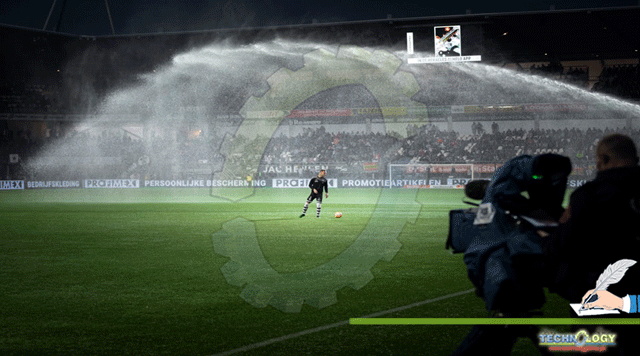Humans are competitive creatures. We always strive to do better, whether that be better than our business rivals, better than our friends in a friendly game of cricket, or better than our former selves while working out.

This competitive energy gets channeled in a lot of different ways, including academically, through video games, or at work. Many also use professional sports as an outlet for it, either by competing in, watching, or betting on these competitions.
Professional sports today look very different from what they did several decades ago and they’re almost completely unrecognizable to how they were a century ago. The way that games are played, watched, officiated, and trained for have all evolved over time.
Many factors have influenced these changes, including economic, social, and even political, but none more so than technological. Advancements in all kinds of different technologies have meant that sports have become the ultra-commercialized, hyper-competitive circuses that they are today.
Of all the technologies that have played a role, here are the ones that have had the most influence.
Television
Television may not be the exciting technology that it once was, but it is difficult to overstate how important it has been in creating modern sports. TV has influenced major sports in three key areas.
The first is that it has helped to make professional leagues more accessible to the public, allowing them to watch games at home, in a sports bar, or while visiting friends.
This has, in turn, created new commercial opportunities for teams and the owners of the leagues. They have been able to charge TV broadcasters more money for the rights to air their games as these companies know it’ll improve their viewing figures. It also allowed leagues and teams to sell advertising space and sign sponsorship deals with other companies who want to get their logos in front of the millions of people that tune in to watch games.
Finally, these two factors come together to drive up the professional standards of the sports. Sponsors don’t want to be associated with unprofessional, rude, or slobbish athletes, while TV broadcasters don’t want to be airing games played in a giant mud pit. Therefore, players receive a lot of media training to help them behave in an appropriate manner and teams spend a lot of money ensuring they have pristine fields and pitches.
The Internet
The internet has taken the improvements made by television and enhanced them even further. It’s improved the access to sports thanks to streaming services that can reach more people and make viewing possible from a smartphone or tablet.
The internet has also made betting on sports more accessible. Of course, we’ve been making wagers on sports for about as long as we have been playing them. After all, the earliest recorded horse racing events in England were held by royalty and nobility who made informal bets among themselves as part of the entertainment.
Today, sports fans that want to bet on a game can simply pull out their smartphone or switch on their computer to check the odds and place their wager. In the US, where online sports betting has recently been legalized, this practice has become incredibly popular with billions of dollars wagered each year, particularly as many companies offer free bets to attract new customers.

Tracking, Telemetry, and Statistics
Many sports fans love learning about team statistics. Most American sports are incredibly stat-heavy, with commentators loudly throwing figures like a player’s passing yards, number of sacks, and percentage of completed passes.
In sports like Formula 1, it’s important to understand lap times, which drivers are fastest through a particular sector, how long a car was stationary during a pit stop, and whether it has the DRS system available. Without this information, it can be difficult to understand exactly what’s happening on track.
However, other sports like football and cricket are beginning to see more stats and data used. Cricket’s “third umpire” uses TV cameras and other sensors to review events on the pitch. Similar tools are used in tennis, football, and golf.
Tracking technology is also being rolled out in leagues like the NHL and the NBA to track the exact position of players on the rink/court in real-time. This can be fed back to coaches, allowing them to make better decisions and provide new insights to fans that watch at home on TV.